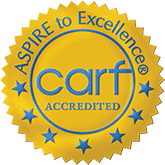Treating Opioid Addiction With Medication During Sober Living

Opioids, like fentanyl, percocet, OxyContin, and heroin are effective painkillers. They are often prescribed to people experiencing moderate to severe pain. Opioid addiction can occur when someone takes opioid medications for two weeks or more. That doesn’t mean that everyone who takes opioids for that long gets addicted to them. Some people don’t like the way it makes them feel. Others appreciate that their pain has lessened on the medication. Then there are people who feel really good when they take these medications. Those are the people who are likely to form an addiction to opioids. This is known as having an opioid use disorder (OUD)
Studies have tried to determine who is at risk for opioid addiction and have failed to find any correlations so far. If you take opioids and realize that you’re not looking forward to having to stop taking them, that’s the first sign that you might be at risk for opioid addiction.
Types of Opioid Treatment
Many people with substance abuse issues don’t seek help until they find themselves in a crisis. Those people often go to hospital emergency rooms for help because they're not sure where else they can go.
Those hospitals will provide an evaluation and assess your primary need. After that, they will try to connect you to the right treatment that best addresses your needs. Many hospitals don’t admit patients solely for withdrawal symptoms or substance abuse treatments unless there is another medical problem present.
Most addiction disorders can be best treated with outpatient therapy or in an inpatient program, whether it is a rehab facility or a sober living center. Many of these programs use medications to help patients manage their physical dependence on opioids.
Medicines Used to Treat Opioid Addiction
Methadone is the most well-known treatment for opioid addictions. When administered properly, methadone helps to relieve withdrawal symptoms and address cravings. It is usually only part of treatment, which should also include counseling. Methadone is always provided in a clinic setting when it’s used to treat OUD.
Buprenorphine, more commonly known as Suboxone or Subutex, also relieves opioid cravings. It also prevents the euphoric feeling that opioids can give those who have formed a dependence on opiates. Buprenorphine is often prescribed by physicians from office settings. There are a few treatment options including a daily dose placed under the tongue, a once-a-month injection, and thin tubes that are inserted under the skin for six months.
Both of these medicines activate the opioid receptors in the body that repress cravings. They are both effective and similar in safety and side effects. These medications are typically used for maintenance treatment. Less commonly, they can both be used to taper a person off of opioids.
Patients suffering from opioid addiction are prone to relapsing, so physicians must try something different with patients who relapse multiple times. Patients who have good social support and are highly motivated tend to do better with these therapies.
Naltrexone for Opioid Use Disorder
Another medication that can be used to treat opioid addiction is Naltrexone. It’s a very different medicine and doesn’t turn the opioid receptor on. Naltrexone blocks the euphoric/sedative effects of opioids. This medication must be administered only after a patient’s system is completely free of all opioids. It can be taken as a monthly injection or orally.
Opioid Medication Safety
Make sure you take your medications as they are prescribed. Do not mix drugs. You're more likely to overdose if you combine an opioid with alcohol, benzodiazepines, or illicit drugs. Keep all of your medications in their original containers and store them safely out of the sight and reach of children. Properly dispose of unused prescription drugs. If your local pharmacy doesn’t have a medication disposal box, you can mix unused medications in cat litter or coffee grounds and throw them in the trash.
Loss of Tolerance After Opioid Medication Treatment
There is an increased risk of overdose when people who have stopped taking opioids relapse and start taking them again. Your body’s tolerance to opioids will be lower, so even a small amount can cause an overdose, especially now that fentanyl is increasingly mixed into illicit drugs. The risk of overdosing is even greater for people who relapse after participating in a detox program or an abstinence treatment program.
How to Encourage Someone to Seek Help
With all types of addiction, when people who are struggling decide they are ready to deal with their issues, they need to get help immediately. The best treatment happens when the person struggling with addiction actually wants to help themselves. Even though friends and family members may want to help someone with addiction issues, actually navigating that change can be a struggle.
How Successful Is Opioid Treatment?
The success of therapy for opioid addiction varies by patient and by the severity of the addiction. Patients who engage in medication-assisted treatment (MAT), using the types of drugs listed on this page are showing excellent success rates. Treatment outcomes can be influenced by co-morbidities or complications, such as mental health issues, or alcohol use. Studies have shown that there is a higher rate of addictive behaviors in patients diagnosed with depression or who use other substances such as alcohol.
Where substance abuse and mental health issues occur together, integrated treatment is needed. Relationships, including friends and family, as well as the environment can play an important role in recovery. It is possible that some patients will need to relapse and repeat therapy several times before experiencing success.
Where Can People Get Help for Opioid Use Disorder?
If someone is experiencing an overdose or a life-threatening emergency, you should call 911 and, if possible, administer Narcan. If you or a loved one with opioid addiction is not in immediate danger, there are several options for treatment. A rehab center is a good start to help with physical addiction and some skills for managing that addiction. Some people choose to undergo treatment on an outpatient basis.
If neither of those sound like a good option for you, perhaps a sober living home would be right for you. At By the Sea Recovery, we strive to give you a structured, supportive environment to help you maintain your sobriety while you continue your work or schooling.


